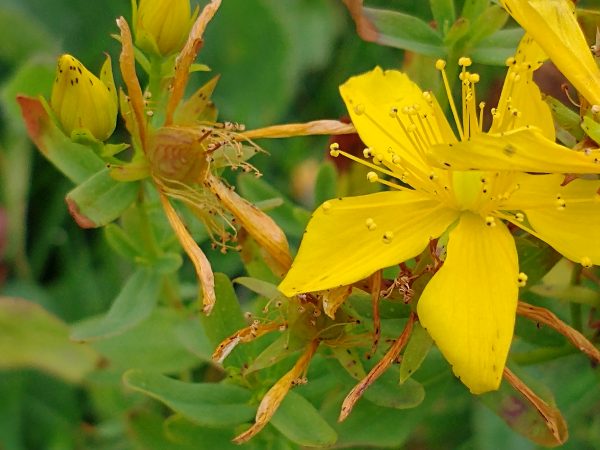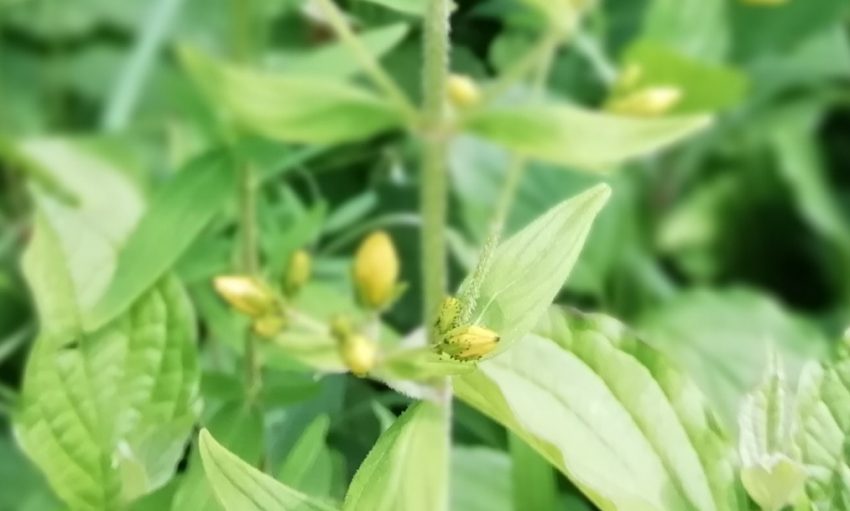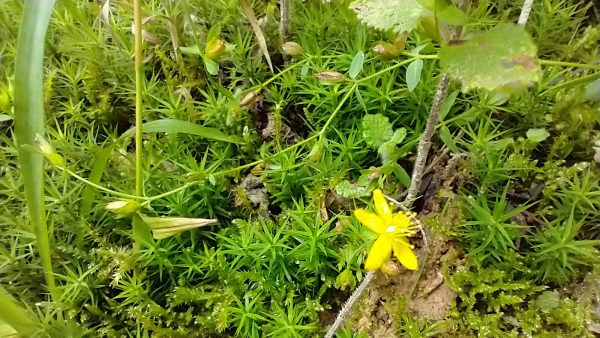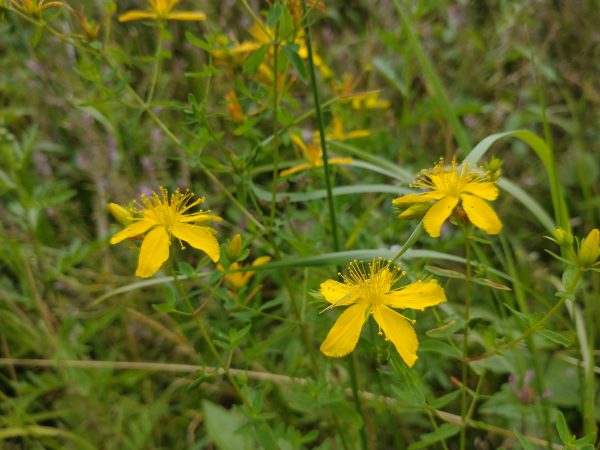Yellow St John’s wort flowers SJW
Hypericum species come in all shapes and sizes but the flowers are all yellow. The herb which is said to improve mood is Hypericum perforatum. St John’s-wort can hybridise, for example Perforate SJW commonly combines with Imperforate SJW, so ID may be harder than it initially seems.
Perforate St John’s wort
This common wildflower grows up to about 90cm and has translucent dots on the leaves and black dots on the petal edges, with flowers 2 to 3cm across. I have spotted it in the last few years on the Crab and Winkle Way in Kent and along the river Stour, both just outside Canterbury in June, and in open ground in the Last Meadow in Seaford in September.


The petal markings can be seen better in these photos I took on Seaford Head in August where it was growing on an exposed site in short grass. The markings are most visible on the bud top left.


The image below shows the perforated leaves well, but please note the comment about hybridisation at the top of this page.


Imperforate SJW, H. maculatum, has many fewer translucent perforations than Perforate but visible net veins. The hybrid, H. x desetangsii also has visible net veins.
Hairy St Johns wort
The Hypericum hirsutum I spotted was smaller and more delicate looking. It was growing by the side of a path through woods on the Crab and Winkle Way in Kent . The leaves of this plant are more elongated than perforate St John’s wort. The second image shows the hairy stem and stalked black dots on sepals.


Trailing St Johns wort
This yellow flower is clearly related but it was growing deep in Guestling Wood and had long slender trailing stems. I have just received my Wild Flower Society Magazine for Autumn 2022 and it contains a handy pull-out ID sheet for UK St John’s-worts by Peter G. Leonard. It mentions Hypericum humifusum which seems a likely candidate. It likes woodland and is common in Sussex. Although the buds seem reddish in my pics, it doesn’t have very narrow leaves like the rare H. linarifolium and its sepals seem longer. Young plants of Slender SJW, H. pulchrum, can apparently have a trailing habit but this is ruled out as it has orange anthers (clearly pale yellow in the pics). In retrospect, I would probably have benefitted from turning the flower over and photographing the wildflower reverse, so as to have a better look at the sepals, which in H. humifusum have three wider than the other two.



Under consideration
This Hypericum in Seaford Last Meadow seemed bigger and lusher looking than the perforatum nearby, although I didn’t think to stop and check at the time.

Here are a few more Hypericums.
I have tagged posts mentioning St John’s wort and Hypericum with St Johns Wort or Hypericum
http://photographingwildflowers.co.uk/tag/st-johns-wort/
http://photographingwildflowers.co.uk/tag/hypericum/

